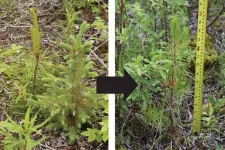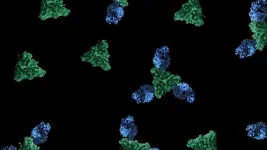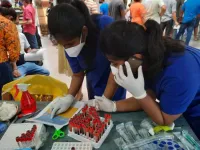This grant will allow the interdisciplinary CURES team of researchers, educators and community partners to continue its ongoing quest to understand the basis for urban environmental health disparities and the human health impact of environmental exposure to complex chemical and non-chemical stressors in Detroit's urban landscape. CURES is one of 26 P30 EHSCCs funded by NIEHS. The CURES team is a collaborative hub focused on community-engaged research and environmental health equity in Detroit and throughout the region.
“We are excited to receive this prestigious and highly competitive EHSCC award from NIEHS,” said Melissa Runge-Morris, M.D., director of CURES and of the Institute of Environmental Health Sciences at Wayne State University. “First launched in 2014, this new funding for CURES is a tribute to the great achievements that our researchers and community collaborators have made to date, and the important impact they have already made on Michigan and will continue to make moving forward.”
The integrative research made possible by this grant will study the hypothesis that diseases that are disproportionately prevalent in urban communities are a consequence of interactions between an individual’s susceptibility, socioeconomic framework and environmental exposures — particularly during vulnerable life windows that tip cellular networks from health toward disease. For the CURES team, Detroit’s history as an industrial focal point combined with its predominantly minority population of African Americans, as well as those originating from the Middle East and Eastern Europe, render it ideal to investigate all aspects of environmental health at the intersection of where pollutants, political, economic, cultural, health care and behavioral factors interact.
CURES making important impact
CURES researchers believe that to make a difference in urban environmental health outcomes, a team-science approach is required. Already, the dynamic collaborations incited by the interdisciplinary CURES team have achieved immeasurable advances in environmental health research that will pave the way to environmental health resilience in at-risk communities.
“Judy Westrick, Ph.D., director of Wayne State’s Lumigen Instrument Center in the Department of Chemistry and co-leader of CURES’ Exposure Signatures Facility Core, coordinated and assisted rapid response efforts to the East Palestine, Ohio, train derailment,” said Runge-Morris. “Her important work helped to lead community sampling, environmental monitoring, and chemical analysis of toxic chemicals released into the local environment. Because of her efforts, she and our research team have positioned CURES at the leading edge nationally as an essential resource for rapid-fire, community-engaged and technically sound responses to combat environmental disasters in the future.”
The CURES team has also become an important collaborative partner to community stakeholders as they advocate for a healthier Detroit. One such project led to a community grant from the American Rescue Plan Act to assist with community violence intervention. To address urban disparities in internet access, a major barrier to health care and workforce equity, CURES community and donor partnerships aided thousands of community members by providing 1,700 computer devices and internet access to older Detroit residents to assist with telehealth technology. CURES also developed a neighborhood deprivation index that is used to investigate how disadvantaged socioeconomics and neighborhood adversity predict Type 1 diabetes-related health outcomes in young Black adolescents.
CURES provided science principles, scientific foundation, guidance, pilot funding and analytical resources that has helped develop and germinate several other significant funded programs at Wayne State University, such as the Center for Leadership in Environmental Awareness and Research (CLEAR), an $11.3 million P42 Superfund Research Program center grant funded by NIEHS in 2022.
Additionally, CURES aligns with and supports the $18.15 million NIMHD P50 Center, ACHIEVE GREATER, led by Wayne State University’s Associate Vice President for Research Phillip Levy, M.D., which takes aim at cardiovascular health disparities in Detroit’s vulnerable urban population.
CURES core leader, Douglas Ruden, Ph.D., of Wayne State University, and CURES epidemiologists at Henry Ford Health Jennifer Straughen, Ph.D., and Christine Cole Johnson, Ph.D., play leadership roles in two comprehensive and large-scale Environmental Influences on Child Health Outcomes (ECHO) Program grants focused on environmental health and child development.
Examples of other high-impact projects stemming from the collaborative work of CURES researchers include NIEHS R01-funded studies to understand the role of gene-by-heavy-metal interactions in development of nonalcoholic fatty liver disease (PIs Wanqing Liu, Ph.D. and Andrea Cassidy-Bushrow, Ph.D.) and the impact of benzene, a major component of air pollution, on insulin resistance leading to Type 2 diabetes (PI Marianna Sadagurski, Ph.D.). CURES also provided pilot funds to a study that is investigating the impact of paternal exposures to per- and poly-fluorinated alkyl substances on the metabolic health of their offspring (PIs Michael Petriello, Ph.D. and Richard Pilsner, Ph.D.).
“The Center for Urban Responses to Environmental Stressors has made a major impact on the Detroit community through its important projects that are working to address critical health concerns of residents of urban cities like Detroit,” said Ezemenari Obasi, Ph.D., vice president for research at Wayne State University. “I am pleased that NIEHS is funding this project to allow them to continue studies that focus on the betterment of urban communities.”
The award number for this National Institutes of Environmental Health Sciences grant is P30ES036084.
# # #
About Wayne State University
Wayne State University is one of the nation’s pre-eminent public research universities in an urban setting. Through its multidisciplinary approach to research and education, and its ongoing collaboration with government, industry and other institutions, the university seeks to enhance economic growth and improve the quality of life in the city of Detroit, state of Michigan and throughout the world. For more information about research at Wayne State University, visit research.wayne.edu.
Wayne State University’s research efforts are dedicated to a prosperity agenda that betters the lives of our students, supports our faculty in pushing the boundaries of knowledge and innovation further, and strengthens the bonds that interconnect Wayne State and our community. To learn more about Wayne State University’s prosperity agenda, visit president.wayne.edu/prosperity-agenda.
END




